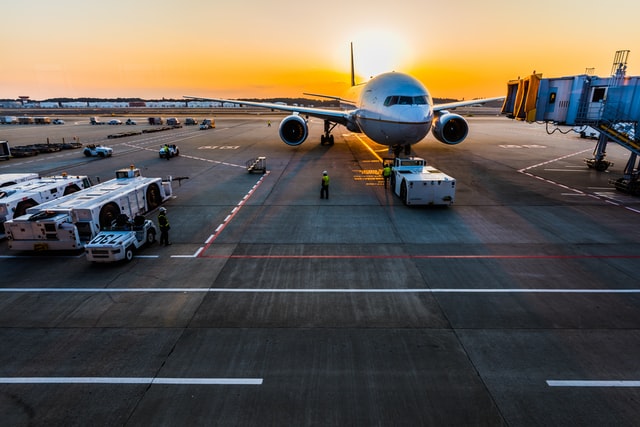November 3, 2022
Brussels: European airport trade body ACI EUROPE today released its airport traffic report for the third quarter (Q3) and September 2022.
Passenger traffic across the European airport network increased by +61% in Q3 compared to the same period last year. International passenger traffic (+84%) drove the surge as largely unrestricted cross border travel led to a boom in leisure and VFR travel over the peak summer months. Domestic passenger traffic (+14%) expanded at lower but still dynamic pace.
When compared to pre-pandemic (2019) levels, passenger traffic in Q3 stood at -12%, a significant improvement over Q2 (-17%) and Q1 (-39%).
EU+ MARKET SURGING IN Q3 – WITH NATIONAL VARIATIONS
The EU+ market1 continued to drive the recovery, with passenger traffic at airports in the bloc increasing by +74% in Q3 compared to the same period last year. The best performances came from airports in the UK (+202%), Finland (+194%) and Ireland (+188%) – largely reflecting the fact that Governments in these countries had been slower to ease travel restrictions last year.
When compared to pre-pandemic (2019) levels, airports in the EU+ market were at -13%, with significant variations in recovery performance:
- Airports in Greece (+4.8%), Luxembourg (+3.3%) and Iceland (+1%) exceeded their pre-pandemic passenger volumes.
- Airports in prominent tourism markets including Portugal (-1.8%), Spain (-7.8%), Croatia (-9.3%) and Italy (-11.4%) generally outperformed the EU+ average, along with those in Romania (-4.8%), Lithuania (-7.6%), Ireland (-10%) and Poland (-11.2%), where significant Ultra-Low Cost Carrier capacity expansion was often a major contributor.
- Airports in the largest EU+ aviation markets recovered at a slower pace – with France (-14.1%) posting the best results followed by the UK (-18.1%) and Germany (-25.9%). The exposure of these markets to intercontinental traffic (especially to Asia) as well as airport capacity restrictions at selected hubs in the UK and Germany acted as recovery‑limiting factors.
- Meanwhile, airports in Finland (-35.4%), Czech Republic (-30.9%), Latvia (-28.7%) and Bulgaria (-27.7%) significantly lagged behind, in large part due to the impact of the war in Ukraine and related sanctions against Russia and Belarus.
At airports in the rest of Europe2, passenger traffic increased by +18% in Q3 when compared to the same period last year. The best performance came from airports in Israel (+164.4%), while the loss of all commercial air traffic for Ukrainian airports and declining passenger volumes in Belarus (-15.9%) and Russia (-3.9%) dragged down the average for the non-EU+ bloc.
When compared to pre-pandemic (Q3 2019) levels, passenger traffic in the rest of Europe stood at –9%. Airports in Albania (+60%), Kosovo (+26.3%), Bosnia-Herzegovina (+23%), Northern Macedonia (+3.3%) and Montenegro (+0.4%) exceeded their pre-pandemic volumes, while those in the major market of Turkey (-6.6%) as well as in Serbia (-4.4%) and Georgia (-2.9%) came close to a full recovery. Airports in Belarus (-60.1%) registered steep declines, with those in Russia (+3.4%) still managing to remain above their pre-pandemic volumes as passenger traffic shifted to domestic and non-EU+ routes.
RECOVERY PATTERNS SHAPING AIRPORT PERFORMANCE
Passenger traffic at the Majors (top 5 European airports) grew by +79.4% in Q3 compared to the same period last year – but remained -16.9% below pre-pandemic (Q3 2019) levels, mainly due to continued travel restrictions in parts of Asia.
- Istanbul was the busiest European airport and the only major European hub whose passenger volumes exceeded pre-pandemic (Q3 2019) levels at +3%. Its passenger traffic increased by nearly +56.1% when compared to Q3 2021.
- London-Heathrow came second followed by Paris-CDG. Volumes increased by +187.1% and +83% respectively for the British and French hubs compared to Q3 last year – standing at -18.4% and -19.9% respectively below pre-pandemic (Q3 2019) levels.
- Capacity restrictions limited passenger traffic growth at Amsterdam-Schiphol (+54.1%) and Frankfurt (+62.3%) compared to Q3 last year. The Dutch and German hubs came in 4th and 5th position – with volumes for both remaining below -20% when compared to pre-pandemic (Q3 2019) levels.
The performance of selected other large airports in Q3 reflected a summer recovery still mainly driven by intra-European and transatlantic routes, and dominated by leisure demand:
- Paris-Orly (+3.7%) exceeded its pre-pandemic (Q3 2019) passenger volumes.
- Palma de Mallorca (-2.4%) and Athens (‑5%), came closest to a full recovery of their pre-pandemic (Q3 2019) passenger volumes – along with Lisbon (-5.2%), Antalya (-8.2%) and London-Stansted (-9.6%).
- Madrid only handled 2% less passengers than Frankfurt and was the 6th busiest European airport in Q3 (-14.5% compared to Q3 2019).
While Regional and smaller airports3 (+50.3%) grew at a lower pace than the Majors in Q3 when compared to the same period last year, they had almost recovered their pre-pandemic (Q3 2019) volumes: -3.7%.
This again reflected leisure and intra-European driven recovery dynamics along with Ultra-Low Cost Carriers’ surge in capacity.There were however significant variations in performance amongst regional airports, with those serving popular tourist destinations and/or relying on Low Cost Carriers seeing passenger volumes exceeding pre-pandemic (Q3 2019) levels – including: Perugia (+125.4%), Zadar (+58%), Santorini (+37%), Funchal (+30.4%), Turin (+26.3%), Kerkyra (+19.9%), Figari (+19.8%), Chania (+18.9%), Olbia (+11.3%) Naples (+10.3%), Menorca (+9.3%), Charleroi (+9.3%), Paphos (+8.2%), Palermo (+4.3%) and Bologna (+3.3%).
TRAFFIC MOMENTUM HOLDING UP IN SEPTEMBER
In September passenger traffic across the European airport network stood at -12% when compared to pre-pandemic (September 2019) levels.
Airports in the EU+ markets kept improving and posted their best monthly recovery performance at -12% (vs. -14% in August). Airports in the rest of Europe also made further gains at -15% (vs. -16% in August).
FREIGHT & AIRCRAFT MOVEMENTS
Freight traffic across the European airport network decreased by –1% in Q3 compared to the same period last year, with EU+ airports seeing freight traffic at –1% and those in the rest of Europe at -4%. Overall freight traffic increased by +6% compared to (Q3 2019) pre-pandemic levels.
Aircraft movements increased by +31% in Q3 across the European airport network compared to the same period last year, with airports in the EU+ market at +37% and those in the rest of Europe at +9%.
DATA BY AIRPORT GROUPS
During Q3, airports welcoming more than 25 million passengers per year (Group 1), airports welcoming between 10 and 25 million passengers (Group 2), airports welcoming between 5 and 10 million passengers (Group 3) and airports welcoming less than 5 million passengers per year (Group 4) reported an average adjustment of -14%, –14.9%, -4.5% and –3%, as compared to pre-pandemic traffic levels (Q3 2019). The airports that reported the highest increases in passenger traffic for Q3 2022 (when compared with Q3 2019) are as follows:
GROUP 1: Paris ORY (+4%), Istanbul IST (+3%), Palma de Mallorca (-2%), Athens & Lisbon (-5%) and Antalya (–8%).
GROUP 2: Naples (+10%), Catania (+3%), , Porto (+2%), Gran Canaria & Tenerife South (-1%) and Saint Petersburg (-2%).
GROUP 3: Sochi (+123%), Charleroi (+9%), Rhodes (+7%), Fuerteventura & Lanzarote (+5%) and Palermo (+3%).
GROUP 4: Tirana (+60%), Santorini & Memmingen (+37%), Funchal (+30%), Iasi (+28%) and Torino & Prishtina (+26%)
Source: Airports Council International Europe (ACI Europe)
Legal Notice: The information in this article is intended for information purposes only. It is not intended for professional information purposes specific to a person or an institution. Every institution has different requirements because of its own circumstances even though they bear a resemblance to each other. Consequently, it is your interest to consult on an expert before taking a decision based on information stated in this article and putting into practice. Neither Karen Audit nor related person or institutions are not responsible for any damages or losses that might occur in consequence of the use of the information in this article by private or formal, real or legal person and institutions.






